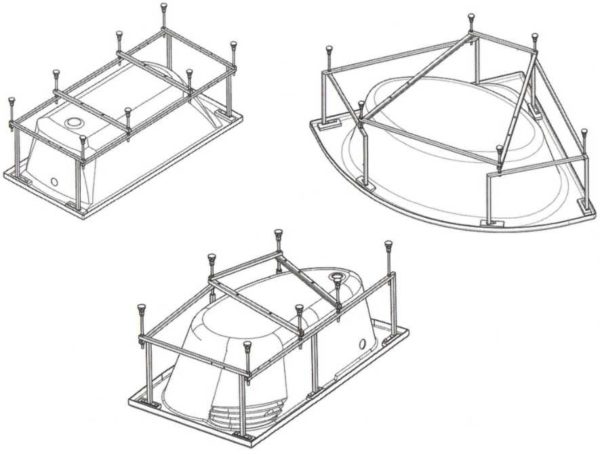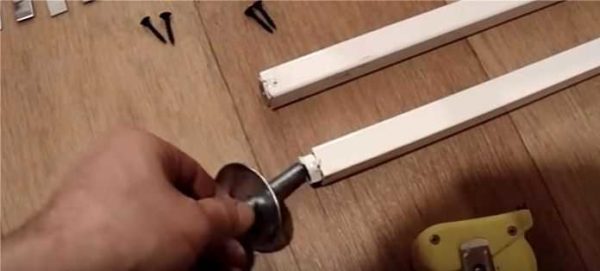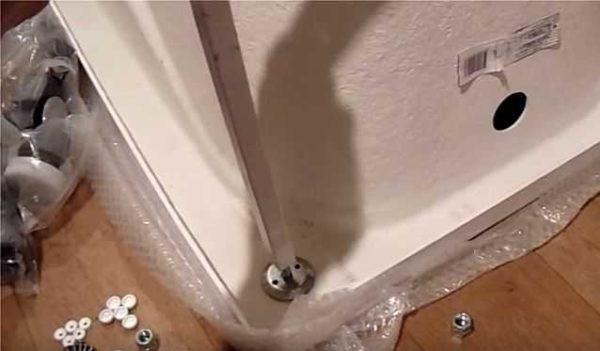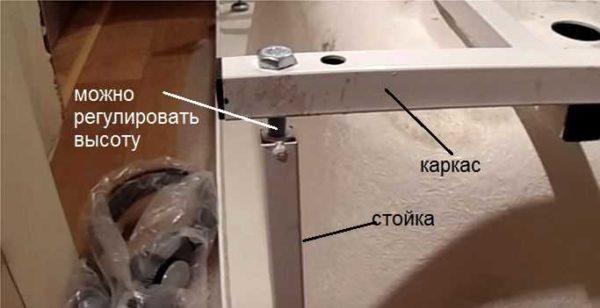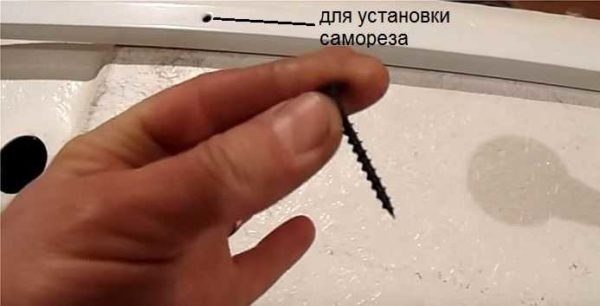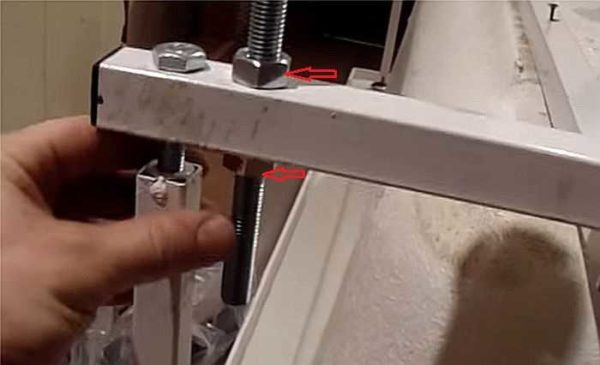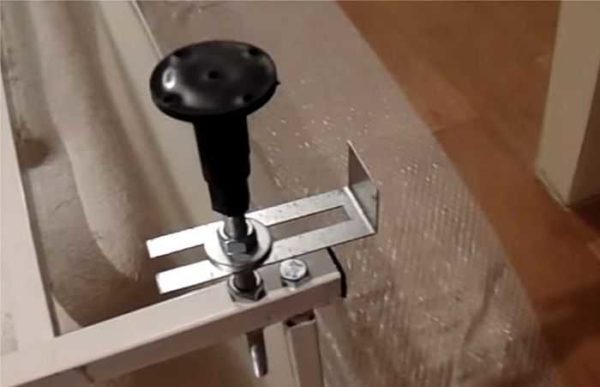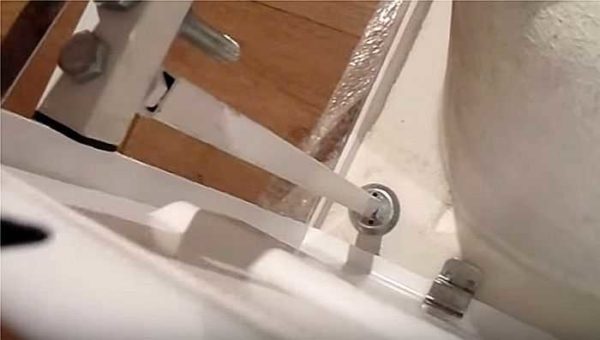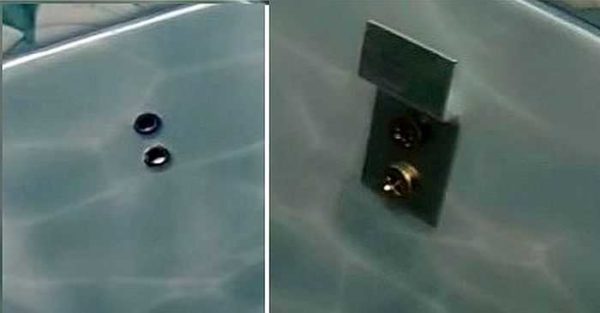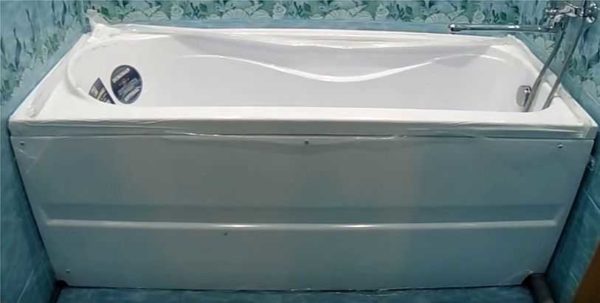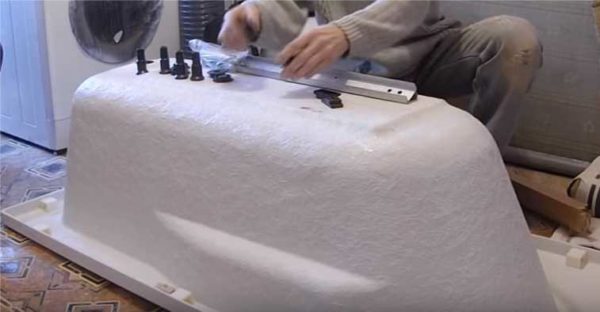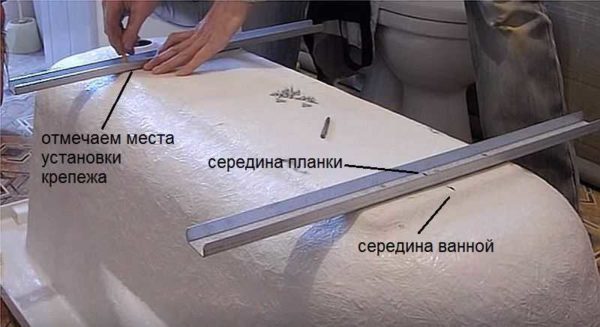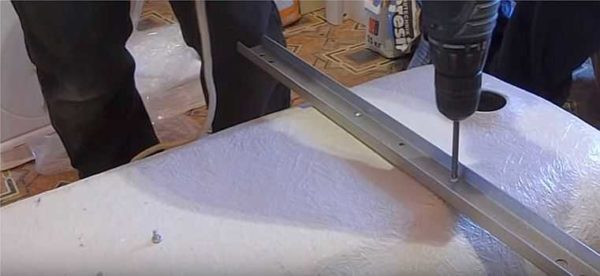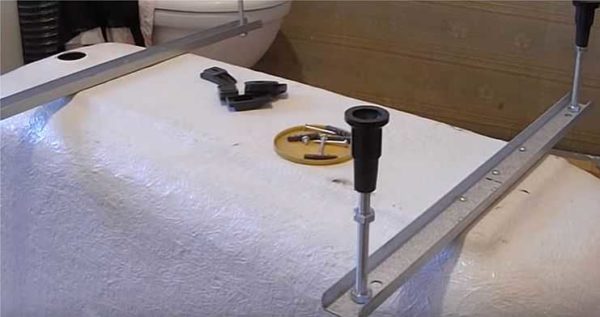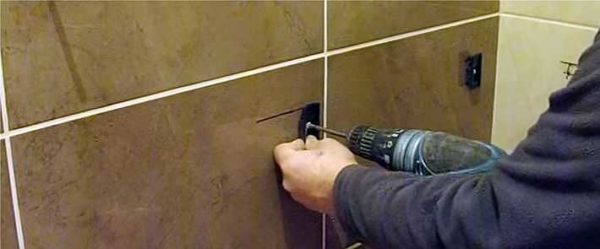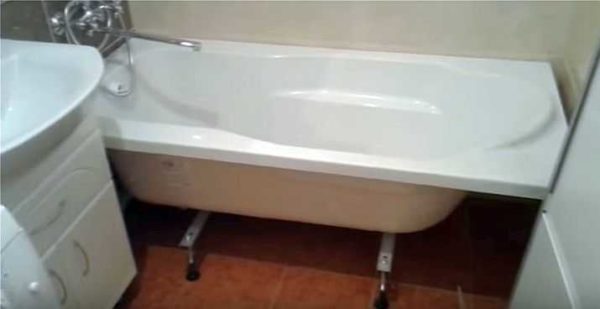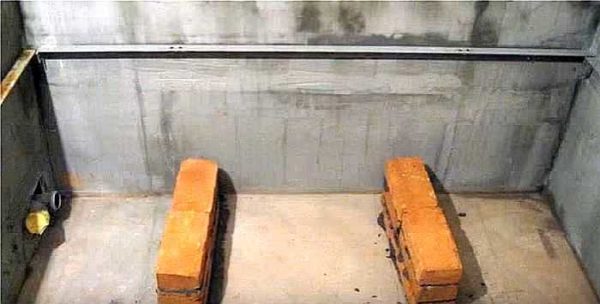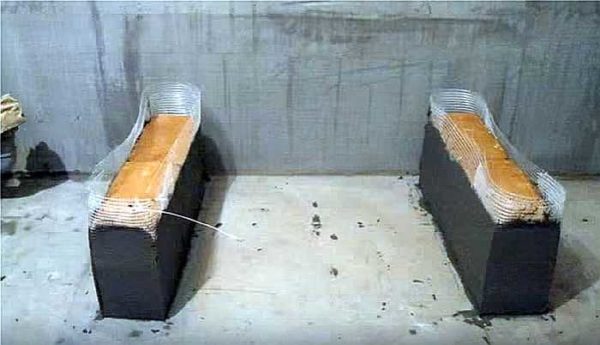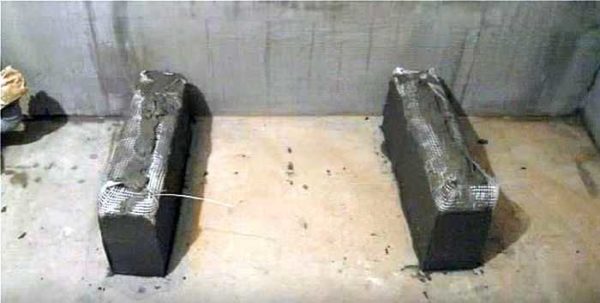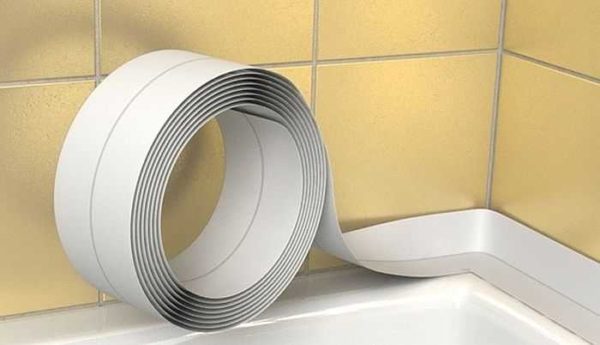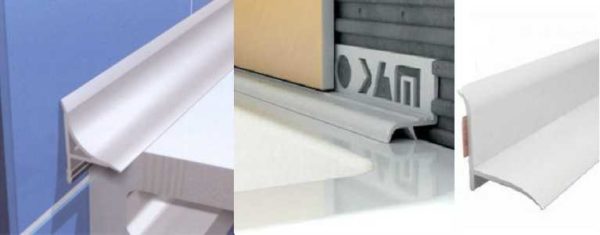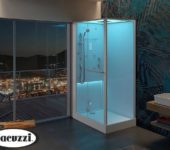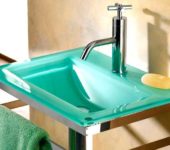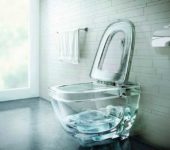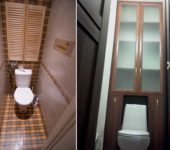How to install an acrylic bathtub
Acrylic bathtubs have rather thin walls and require reliable support. Installation of an acrylic bathtub is possible in several ways: using the factory frame that comes with the kit, or on bricks. There is also a combined option - when a frame is used, propping up the bottom in some places with bricks. This method is needed if the bottom is too thin and “plays” under your feet.
The frame or legs for the acrylic bathtub are sometimes included in the kit, sometimes in an extended configuration. The difference between the legs and the frame is significant, and not only in price. The legs, installed on the slats, are attached only to the reinforced bottom, usually with two or four self-tapping screws. In this case, the sides remain unsupported (below the photo on the left). The frame, most often, is more massive, made of a thicker profiled pipe (square section), has more points of support. Part of the supports goes from the sides of the bath, the other part is attached to the bottom, supporting it (photo on the right).
Regardless of the type of frame, it must be attached to the bottom. To do this, holes are drilled in the bottom in the right places, into which self-tapping screws are then screwed. There is no need to be afraid of this moment. This is the technology for installing an acrylic bath. In the attachment points there are reinforcement plates. But, in order not to damage the bath, carefully read the instructions before starting the installation, there are prescribed the dimensions of the fasteners that can be used.
The content of the article
Installation of an acrylic bathtub on a frame
A frame is developed for each bathtub, therefore, the assembly nuances are different for each case. Even for one company, for different models of the same form, frames are different. They take into account the geometry of the bath as well as the distribution of loads. Nevertheless, the order of work is general, as are some technical points.
We twist the frame
The frame is assembled on which the bottom rests. In some cases, it is welded and does not need to be assembled. The frame is placed on the bottom of the inverted tub until it is secured with anything. It is exposed straight, as it must be fastened.
- Washers with fasteners are installed on the racks. Racks are either profile pieces (square pipes) or metal rods with threads at both ends. They must be attached to the sides of the tub. Firms usually develop fasteners of their own form. The photo shows one of the options.
- Racks are usually installed at the corners of the bath. There are plates in these places, there may be holes, or they may not be - you will have to drill yourself. The number of racks depends on the shape of the bath, but not less than 4-5, and preferably 6-7 pieces. At first, the racks are simply assembled and placed in the designated places (we are not fixing it yet).
- The second side of the uprights is connected to the frame supporting the bottom. A threaded nut is mounted into the end of the rack, we screw a screw into it, connecting the frame and the rack.
- After installing the racks, using the bolts, align the position of the frame. It should be located strictly horizontally, and the bottom should lie on it tightly, without gaps.
We fix the bath to the frame
Once the frame is aligned, it is screwed to the reinforced bottom of the acrylic tub. It is necessary to use self-tapping screws of the recommended length, which come with the frame.
- The next step in installing an acrylic bathtub is setting up and fixing the racks.They are already adjusted in height, now we need to set them vertically (we control the building level from both sides or check the accuracy of the plumb line). The exposed racks "sit" on the screws. The length of the fasteners is indicated in the instructions for each bath, but they are usually shorter than those with which the bottom was fixed.
- Next, we install the legs on the frame.
- On the side where there will be no screen, a nut is screwed onto the pin of the leg, after which they are inserted into the holes in the frame (hanging on this nut), fixed to the frame with another nut. The result is a height-adjustable design - by tightening the nuts, you can set the bath to the desired position.
- The assembly of the legs on the side of the screen is different. A nut is screwed on, two large washers are installed, a support for the screen (L-shaped plate) is inserted between them, the second nut is screwed on. We got a support for the screen, adjustable in length and height. Then another nut is screwed on - the supporting one - and the legs can be put on the frame.
Screen mounting
This is not quite the installation of an acrylic bath, but this stage is rarely done without: we install the screen. If you bought this option, there are plates included that will support it. They are placed at the edges and in the middle. Attaching the screen and adjusting the stops on the legs, fix them in the desired position. Then, on the bath and the screen, they mark the places where the plates must be fixed, then they drill holes for the fasteners and fix the screen.
- Next, you need to install the fasteners for the acrylic bathtub to the walls. These are curved plates that the sides cling to. We move the installed and leveled bath to the wall, mark where the sides will be, put the plates so that their upper edge is 3-4 mm below the mark. They are fastened to dowels by drilling holes in the walls for them.
- When installing, the bath is put on with the sides on the bolted plates. Having established, we check whether it is level, adjust the height with the legs if necessary. Next, we connect the drain and the last stage - we fasten the screen to the plates installed on the side. At the bottom, he simply rests against the exposed plates. The installation of the acrylic bath is complete.
Next, you will need to make the junction of the sides of the bathtub with the wall sealed, but more on that below, since this technology will be the same for any installation method.
The procedure for mounting an acrylic bathtub on legs
Assembling an acrylic bathtub with legs is much easier and faster - the design is elementary. The set includes two strips, four legs with pins, fastening the acrylic bathtub to the wall, a number of nuts and screws.
Marking and assembling the frame
In an acrylic bathtub on legs, the frame consists of two strips that are attached to the bottom. These slats come with adjustable feet. The task is to evenly screw the strips, install the legs and set the entire structure in level. Not too hard.
Find the middle of the mounting plates and the bottom of the bath, put marks. Aligning the marks in the middle, two mounting strips lay the not inverted bath, stepping back slightly from the edge of the reinforcing plate (3-4 cm), install the strips. With a pencil or marker, mark the installation locations of the fasteners (there are holes in the strips).
Holes are drilled according to the marks applied to a depth of about 1 cm (you can glue colored tape on the drill to make it easier to control the depth). The diameter of the drill is selected 1-2 mm less than the diameter of the self-tapping screws (specified in the instructions or can be measured). Having installed the strips and aligning the holes, we attach them to the self-tapping screws (included in the kit).
We put the legs
The next step is to install the legs.They are assembled in the same way as in the previous version: one lock nut is screwed on, the rod is inserted into the hole on the mounted bar, and fixed with another nut. An additional nut is needed on the legs from the side of the screen mounting (pictured).
Next, turn the bath over, set it horizontally, twisting the legs. We control the situation with the building level. Then you need to install a mount on the walls, with which the sides are fixed to the walls.
The bath, set in level and height, is put in place, we mark where the sides end. We take the mounting plate, attach it to the mark so that its upper edge is 3-4 mm lower, mark the hole for the fasteners. The number of fasteners is different - one or two dowels, as well as the number of fixing plates on the wall (one or two on the wall, depending on the size). We drill holes, insert plastic plugs from the dowels, put the clamps, screw them on.
Now you can install the acrylic bathtub - we raise it so that the sides are higher than the plates installed on the wall. We lower it, pressing the sides to the wall, they cling to the fixing plates. The installation of the acrylic bathtub on legs is complete. Further - drain connection and you can use it.
The assembly of such an acrylic bathtub takes a little time. But the construction turns out to be very flimsy. Not every adult feels confident. The bottom flexes, the legs slide over the tiles. The pleasure is below average.
There is also a combined installation option. This is when they put on legs and bricks is shown in the next video. After assembly, two bricks are placed on the mortar, a significant layer of mortar is laid on top (it must be kneaded with low plasticity, adding a minimum of water). When you put the bath in place, part of the solution is squeezed out, it is carefully picked up, the edges of the remaining part are adjusted. The bath is loaded (it can be filled with water) and left for several days - so that the solution grabs.
We put on bricks
Installation on bricks requires accuracy and precision - it is necessary to set the support evenly so that the sides of the bath are in a horizontal plane.
They are usually placed on two or three rows of bricks laid on the bed (on the wide part). The number of bricks depends on the placement of the sewer outlet. A thin layer of mortar is laid between the bricks. The bath is placed on bricks, the sides are checked horizontally, if necessary, they are corrected by changing the thickness of the mortar between the bricks (we do not impose anything on the upper ones yet).
Having set it, mark on the wall at what level the sides are. A corner is attached at this mark, which will support the sides of the bath. It is better to take an aluminum corner, shelf width - 3 cm, thickness - 2-3 mm.
To give the base an aesthetic look, you can wrap them with a plaster mesh, plaster them. In fact, plaster also reduces the hygroscopicity of red bricks, extending the life of the support. So it is undesirable to skip this stage.
Bending the painting grid, a solid layer of cement-sand mortar is applied to the tops of the bricks. A solid layer of sanitary silicone is applied to the corner, after which the bath is installed. We move it to the wall exactly so that the gaps between the side and the wall are even.
We select the extruded silicone, forming a beautiful seam. You can smooth it down with a teaspoon. If you lead it without tearing your hand from edge to edge, you get an even and smooth seam. Then we remove the squeezed out solution. We remove the silicone earlier - it "seizes" faster. The solution must be picked up no later than 20-30 minutes after laying, so do not tighten it either.
If the silicone was not enough and it did not squeeze out - it's okay. We form a seam, filling the gap with silicone on top. This completes the installation of the acrylic bathtub on the bricks. Further - the connection of the siphon and finishing, and this is not quite to this topic.
Sealing the junction of the bath and the wall
No matter how tightly you put the bath against the wall, the gap still remains. With acrylics, the problem is compounded by the fact that their sides sag slightly in the middle. Therefore, it will not work just to seal the gap with silicone. Additional funds are needed.
The easiest way to fix the tape is that it is sold in rolls. One is enough for sealing on three sides. Shelf widths are 20 mm and 30 mm. The tape is rolled out along the edge of the bathtub and fixed to the silicone.
There are also various bath corners. They are made of plastic, and the edges are rubberized so that the joint is tighter and the seams between the tiles do not flow. The profiles and shape of the corners are different. There are those that are mounted on top of the tiles, there are those that are wound under it. And they can be of different shapes and colors.
Regardless of the shape, they are installed in the same way: in the corners, the lower parts are cut at an angle of 45 °. The quality of the joint is checked. Then the surface of the wall, side and corner is degreased (preferably with alcohol), silicone is applied, on which the corner is installed. Everything is left for the time required for the sealant to cure (indicated on the tube). After that, you can use the bathroom.
In the case of acrylic bathtubs, there is one caveat: before applying the sealant, they are filled with water, and in this state the composition is left to polymerize. Otherwise, when water is collected and the load on the sides increases, microcracks will appear on it, into which water will flow.
A few words about which sealant is better to use when sealing the junction between the bath and the wall. The best option is an aquarium sealant. It is no less durable than plumbing, but it has some additives, thanks to which it does not grow moldy, does not change color and does not bloom.


